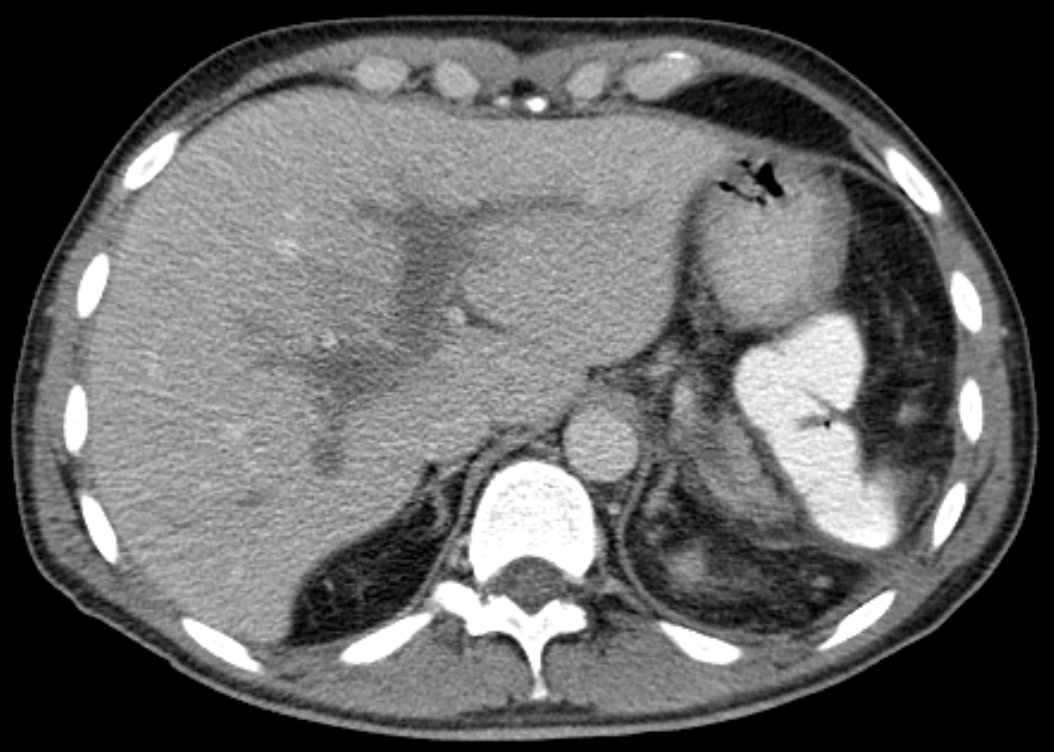Primitive Portal Vein Thrombosis

Portal vein thrombosis (PVT) is associated with acute (recent) or chronic (long-standing) thrombosis of the portal system.
Epidemiology
Prevalence of the primary form (PVT not associated with cirrhosis or a tumour) is estimated at between 1 and 9/100,000. PVT may occur at any age.
Clinical description
Acute thrombosis may be asymptomatic or may manifest as abdominal pain, fever and intestinal ischemia (ileus, rectal bleeding, and ascites). In some cases, intestinal necrosis (manifesting as peritonitis and multivisceral failure) may occur if treatment is delayed. Chronic PVT is associated with cavernous transformation resulting in portal hypertension. PVT may be discovered fortuitously as a result of investigations for hypersplenism or intestinal varices. Haemorrhage due to rupture of these varices is a major complication. Portal cholangiopathy (due to biliary compression resulting from cavernous transformation) leads to calculus or cholestasis in rare cases.
Etiology
The most frequent causes of PVT are advanced cirrhosis and malignant tumours in adults, and neonatal omphalitis or cannulation of the umbilical vein in children. In the absence of a tumour or advanced cirrhosis, PVT may be caused by localised intra-abdominal inflammation or be associated with a general prothrombotic state caused by a myeloproliferative syndrome (25% of cases), G20210A mutations in the factor II (prothrombin) gene (10% of cases), antiphospholipid syndrome, or by deficiencies of antithrombin, protein C, protein S or factor V Leiden. PVT is generally caused by an association of these causes.
Diagnostic methods
Diagnosis of acute PVT or cavernous transformation can be easily established through non-invasive imaging techniques: Doppler ultrasound and tomodensitometry. MRI is a useful tool for diagnosing portal cholangiopathy. It is essential to search for the local or generalised cause of PVT.
Differential diagnosis
Differential diagnosis should include all other causes of abdominal pain (with or without fever) for acute PVT and all other causes of portal hypertension without hepatic insufficiency for chronic PVT.
Genetic counseling
Although some causes of PVT are hereditary, PVT is not an inherited disease. Genetic counselling should be proposed for patients with a hereditary predisposition for thrombosis.
Management and treatment
Treatment of acute PVT includes administration of anticoagulants (for 3 to 6 months) and treatment of the underlying causative factor(s). Permeability is restored after treatment in 10-40% of cases. Exploratory laparotomy and intestinal resection may be necessary if intestinal necrosis is present. In chronic PVT, the portal hypertension is treated according to the same protocols as those established for cirrhosis. If management of the portal hypertension is satisfactory, long-term anticoagulant therapy is recommended for patients in a permanent prothrombotic state or in case of extension to the superior mesenteric vein.
Prognosis
For patients receiving early diagnosis and appropriate treatment, the prognosis is good but varies depending on the associated conditions and age at onset.